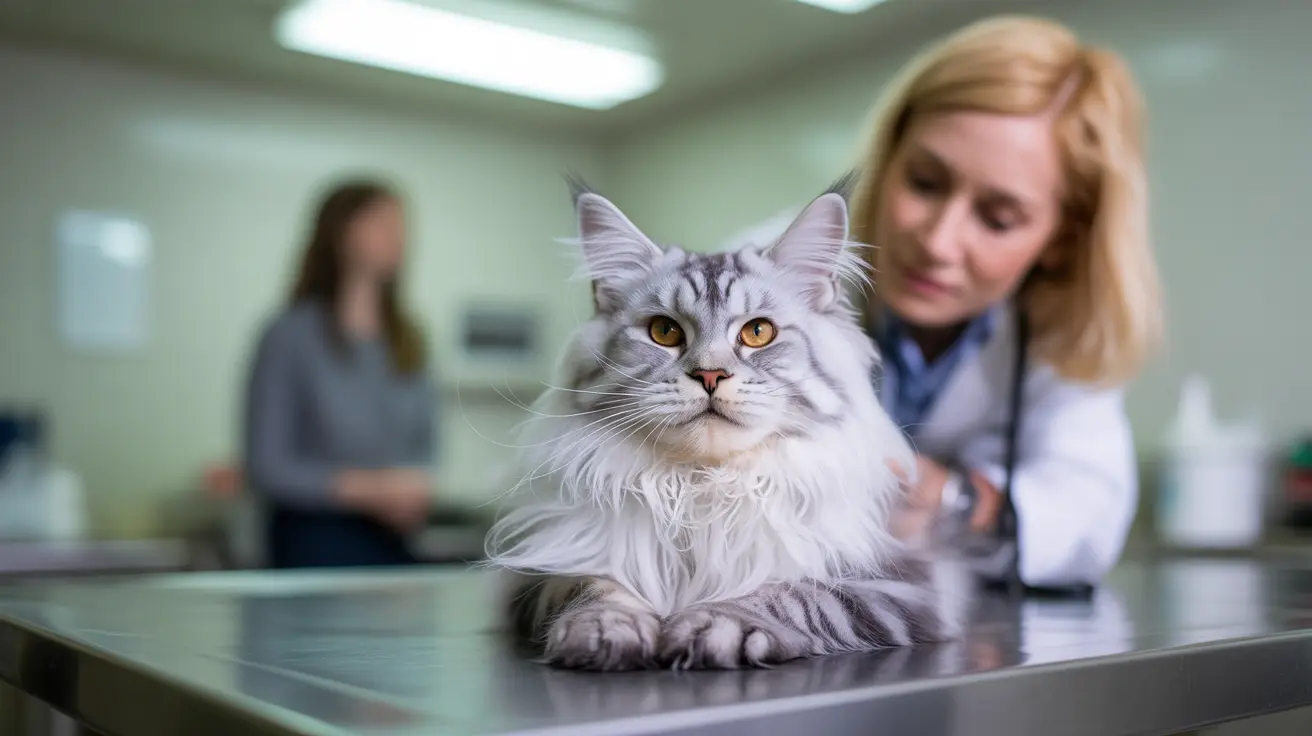Cat Spaying and Neutering Benefits: A Complete Guide for Responsible Pet Owners
Every year, millions of cats end up in shelters across the United States, with many healthy animals tragically euthanized due to overpopulation. This heartbreaking reality makes spaying and neutering one of the most important decisions cat owners can make—not just for their individual pets, but for the broader feline community. Despite being one of the most routine veterinary procedures performed today, misconceptions about cat spaying and neutering benefits continue to prevent many pet owners from taking this crucial step.
Cat spaying and neutering benefits extend far beyond population control, encompassing significant health advantages, behavioral improvements, and community welfare contributions. From eliminating the risk of certain cancers to reducing aggressive behaviors and extending your cat's lifespan by 3 to 5 years, sterilization represents one of the most impactful investments in your pet's wellbeing. This comprehensive guide will explore the evidence-based advantages of spaying and neutering, debunk common myths, and provide practical information to help you make an informed decision for your feline companion.
Understanding Cat Spaying and Neutering Procedures
Spaying and neutering are surgical sterilization procedures performed under general anesthesia to remove reproductive organs. For female cats, spaying involves either ovariohysterectomy (removal of ovaries and uterus) or ovariectomy (removal of ovaries only), while neutering male cats requires castration to remove the testicles. These procedures are among the most commonly performed surgeries in veterinary medicine, with experienced surgeons completing them routinely with minimal complications.
Most cats can safely undergo sterilization between 4 to 6 months of age, coinciding with when they reach sexual maturity. However, modern veterinary practices can perform these surgeries on kittens as young as 8 weeks old, and mature cats of any age can benefit from the procedure. The timing often depends on various factors including the cat's health status, lifestyle, and whether they've already begun displaying signs of sexual maturity such as spraying, vocalization, or roaming behaviors.
Health Benefits: Extending Your Cat's Life
Cancer Prevention and Reproductive Health
One of the most compelling cat spaying and neutering benefits lies in cancer prevention. Spaying female cats before their first heat cycle dramatically reduces the risk of mammary gland tumors, which are malignant in approximately 90% of cats. Additionally, spaying completely eliminates the risk of ovarian and uterine cancers, while significantly reducing the likelihood of cervical cancer development.
For male cats, neutering eliminates testicular cancer risk entirely and decreases the incidence of prostate disease. These cancer prevention benefits become even more significant when considering that altered cats typically live 3 to 5 years longer than their intact counterparts, representing a substantial increase in life expectancy.
Disease Prevention and Immune System Benefits
Sterilized cats face reduced risks of contracting serious diseases transmitted through bites and mating behaviors. Feline Immunodeficiency Virus (FIV) and Feline Leukemia Virus (FeLV) spread primarily through bite wounds during fights, and since neutered cats fight significantly less than intact animals, their exposure risk decreases substantially. This is particularly important given that intact male cats living outdoors have an average lifespan of less than two years, largely due to fights, accidents, and disease transmission.
Female cats also avoid the health complications associated with persistent heat cycles, including uterine infections (pyometra) and the physical stress of repeated hormonal fluctuations. These conditions can be life-threatening and require expensive emergency treatment, making spaying a preventive measure with both health and financial benefits.
Behavioral Improvements Through Sterilization
Reducing Aggressive and Territorial Behaviors
Cat spaying and neutering benefits include dramatic behavioral improvements that make pets more suitable for family life. Neutered male cats show significantly reduced territorial aggression, with studies indicating that altered animals fight much less frequently than intact cats. This reduction in aggressive behavior extends to interactions with both other cats and humans, decreasing the likelihood of cat bites and creating a more harmonious household environment.
The elimination of sexual hormone production through sterilization helps create more balanced behavior patterns without causing lethargy or personality changes. Cats retain their individual personalities while becoming generally calmer and more focused on their human families rather than seeking mates.
Eliminating Spraying and Marking Behaviors
One of the most noticeable benefits occurs in the elimination or significant reduction of spraying and marking behaviors. Intact male cats spray urine to mark their territory, creating unpleasant odors and damage within homes. Neutering reduces or completely eliminates this behavior in most cases, particularly when performed before the cat reaches sexual maturity at around 4 to 6 months of age.
Female cats in heat also exhibit marking behaviors and emit fluids that can be problematic for indoor living. Spaying eliminates heat cycles entirely, preventing the vocalization, restlessness, and marking behaviors that accompany these periods.
Population Control and Community Benefits
Addressing Pet Overpopulation
The impact of sterilization on companion animal overpopulation cannot be overstated. Cats are 45 times more prolific than humans, and a single unspayed female cat and her offspring can produce thousands of kittens over several years. With millions of healthy cats euthanized annually in the United States due to lack of homes, spaying and neutering represents the most effective solution to this crisis.
Even indoor cats can contribute to overpopulation if they escape during heat cycles or if owners underestimate their pets' reproductive capabilities. The cost of sterilization surgery is significantly less than the expense of caring for a litter of kittens, making it both a humanitarian and economically sound decision.
Community Safety and Public Health
Sterilized pets contribute to safer, healthier communities by reducing stray animal populations. Unaltered cats are more likely to roam extensively, with surveys indicating that up to 85% of cats involved in vehicle accidents are intact. These roaming behaviors not only endanger the animals themselves but can create public nuisances, including property damage, noise disturbances, and potential rabies transmission risks.
The financial burden of capturing, impounding, and caring for unwanted animals costs communities over a billion dollars annually. By preventing unwanted litters through sterilization, responsible pet owners help reduce these public costs while contributing to overall community welfare.
Debunking Common Myths About Cat Sterilization
Weight Gain and Metabolism Changes
One of the most persistent misconceptions about cat spaying and neutering benefits concerns weight gain. While sterilized cats may experience a slight decrease in metabolic rate due to hormonal changes, the surgery itself does not cause obesity. Weight gain occurs due to overfeeding and lack of exercise, not the sterilization procedure. Pet owners can easily prevent weight issues by adjusting food portions according to their cat's activity level and ensuring adequate exercise opportunities.
Proper diet management and regular veterinary monitoring can maintain healthy weight in sterilized cats throughout their lives. The key lies in understanding that dietary needs may change slightly after surgery and adjusting feeding practices accordingly.
Personality and Behavioral Concerns
Another common myth suggests that sterilization fundamentally changes a cat's personality, making them lazy or less affectionate. In reality, neutering and spaying reduce hormone-driven behaviors without affecting core personality traits. Cats remain playful, affectionate, and active while becoming less focused on territory marking, fighting, and mate-seeking behaviors.
The behavioral changes that do occur—reduced aggression, less roaming, decreased spraying—generally make cats better companions while preserving their individual characteristics and bonds with their human families.
Optimal Timing for Spaying and Neutering
Age Recommendations and Considerations
Most veterinarians recommend spaying and neutering cats before they reach sexual maturity, typically around 4 to 6 months of age. This timing coincides with vaccination schedules and ensures that cats receive sterilization before developing problematic behaviors or experiencing their first heat cycle. Early sterilization provides maximum health benefits, particularly for cancer prevention in female cats.
However, cats of any age can benefit from sterilization. Mature cats who have not been spayed or neutered can still experience significant health and behavioral improvements from the procedure, though some benefits may be reduced compared to early sterilization.
Special Circumstances and Timing Flexibility
Veterinarians can safely perform sterilization surgeries on kittens as young as 8 weeks old, making it possible for shelters and rescue organizations to ensure all adopted animals are sterilized. This early intervention prevents accidental breeding and ensures that every adopted cat contributes to population control rather than overpopulation.
For cats already in heat, spaying remains possible but may be more technically challenging for the surgeon. Your veterinarian can advise on the best timing based on your cat's individual circumstances, health status, and current reproductive cycle.
Post-Surgery Care and Recovery
Immediate Post-Operative Management
Recovery from spaying and neutering is typically straightforward, with most cats returning to normal behavior within a few days. Post-operative care involves keeping cats calm and preventing excessive activity that could disrupt healing incisions. Many veterinarians recommend using an Elizabethan collar to prevent licking or chewing at surgical sites.
Monitoring the incision site for signs of infection, inflammation, or unusual discharge is important during the recovery period. Most complications are rare and easily managed when caught early, making attentive post-surgical care essential for optimal outcomes.
Long-Term Care Considerations
Once fully healed, sterilized cats require no special ongoing care related to their surgery. However, owners should remain aware of potential metabolic changes and adjust feeding practices if necessary to prevent weight gain. Regular veterinary checkups help monitor overall health and catch any issues early, contributing to the extended lifespan that sterilized cats typically enjoy.
Cost Considerations and Financial Assistance
Investment in Long-Term Health
The cost of spaying or neutering represents a one-time investment that provides lifelong benefits. When compared to the potential costs of treating reproductive cancers, managing unwanted litters, or addressing behavioral problems, sterilization is remarkably cost-effective. The procedure typically costs significantly less than caring for even a single litter of kittens.
Affordable Options and Assistance Programs
Various options exist to make sterilization accessible to all pet owners. Low-cost spay and neuter clinics specialize in high-volume, affordable surgeries performed by experienced veterinarians. Voucher programs help subsidize surgery costs for qualified low-income pet owners, while referral programs connect owners with local affordable options.
Many communities recognize the public benefit of pet sterilization and offer financial assistance programs to remove cost barriers. Private veterinary offices often provide discounts for spay and neuter procedures, making this essential service accessible to responsible pet owners across various economic circumstances.
Frequently Asked Questions
- When is the best age to spay or neuter my cat?
Most veterinarians recommend spaying or neutering cats between 4 to 6 months of age, before they reach sexual maturity. However, the procedure can be safely performed on kittens as young as 8 weeks old and on adult cats of any age. Early sterilization provides maximum health benefits, particularly for cancer prevention.
- Will spaying or neutering make my cat overweight?
The surgery itself does not cause weight gain. While sterilized cats may have a slightly slower metabolism due to hormonal changes, obesity results from overfeeding and lack of exercise, not the procedure. Pet owners can prevent weight issues by adjusting food portions according to their cat's activity level and ensuring adequate exercise.
- How long does recovery take after spaying or neutering?
Most cats recover quickly from sterilization surgery, typically returning to normal behavior within a few days. Full healing of the incision site usually takes 10-14 days. During recovery, cats should be kept calm and prevented from excessive activity that could disrupt the healing process.
- Can I spay my cat if she's already in heat?
Yes, cats can be spayed while in heat, although the procedure may be more technically challenging for the veterinarian. Your vet can advise on the best timing based on your cat's individual circumstances and current reproductive cycle.
- Will neutering change my cat's personality?
Neutering reduces hormone-driven behaviors such as territorial aggression, spraying, and roaming without affecting your cat's core personality traits. Cats remain playful and affectionate while becoming generally calmer and more focused on their human families rather than seeking mates.
- How much does spaying or neutering cost?
Costs vary by location and provider, but spaying and neutering are cost-effective investments in your cat's health. Many communities offer low-cost clinics, voucher programs, and financial assistance to make the procedure accessible. The one-time cost is typically less than caring for a single litter of kittens.
- What diseases does spaying and neutering prevent?
Spaying eliminates risks of ovarian, uterine, and cervical cancers while significantly reducing mammary cancer risk when done before the first heat cycle. Neutering eliminates testicular cancer and reduces prostate disease. Both procedures reduce risks of diseases transmitted through fighting, such as FIV and FeLV.
Conclusion
The evidence overwhelmingly supports cat spaying and neutering benefits as essential components of responsible pet ownership. From extending your cat's lifespan by 3 to 5 years to preventing serious diseases and reducing problematic behaviors, sterilization represents one of the most significant investments you can make in your pet's wellbeing. The procedure's role in addressing pet overpopulation makes it not just a personal choice, but a contribution to broader animal welfare and community health.
With modern veterinary techniques making these surgeries routine and safe, cost-effective options available in most communities, and recovery periods typically lasting just days, there are few barriers to providing this essential care for your feline companion. By choosing to spay or neuter your cat, you're ensuring they live a longer, healthier, and more comfortable life while contributing to the solution of pet overpopulation—a decision that benefits not just your family, but countless cats in need of homes across the country.






